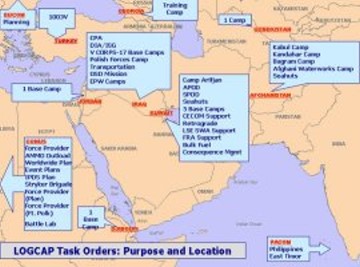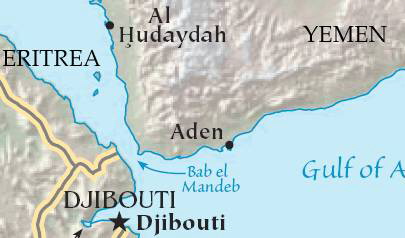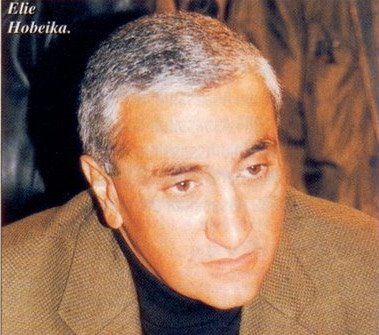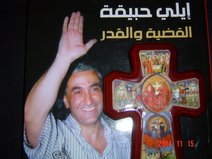Yemen: Behind Al-Qaeda Scenarios, a Geopolitical Oil Chokepoint to Eurasia

http://engdahl.oilgeopolitics.net/Geopolitics___Eurasia/Chokepoint_Yemen/chokepoint_yemen.html
By F. William Engdahl, January 2010
On December 25 US authorities arrested a Nigerian named Abdulmutallab aboard a Northwest Airlines flight from Amsterdam to Detroit on charges of having tried to blow up the plane with smuggled explosives. Since then reports have been broadcast from CNN, the New York Times and other sources that he was “suspected” of having been trained in Yemen for his terror mission. What the world has been subjected to since is the emergence of a new target for the US ‘War on Terror,’ namely a desolate state on the Arabian Peninsula, Yemen. A closer look at the background suggests the Pentagon and US intelligence have a hidden agenda in Yemen.
For some months the world has seen a steady escalation of US military involvement in Yemen, a dismally poor land adjacent to Saudi Arabia on its north, the Red Sea on its west, the Gulf of Aden on its south, opening to the Arabian Sea, overlooking another desolate land that has been in the headlines of late, Somalia. The evidence suggests that the Pentagon and US intelligence are moving to militarize a strategic chokepoint for the world’s oil flows, Bab el-Mandab, and using the Somalia piracy incident, together with claims of a new Al Qaeda threat arising from Yemen, to militarize one of the world’s most important oil transport routes. In addition, undeveloped petroleum reserves in the territory between Yemen and Saudi Arabia are reportedly among the world’s largest.
The 23-year-old Nigerian man charged with the failed bomb attempt, Abdulmutallab, reportedly has been talking, claiming he was sent on his mission by Al Qaeda in the Arabian Peninsula (AQAP), based in Yemen. This has conveniently turned the world’s attention on Yemen as a new center of the alleged Al Qaeda terror organization.
Notably, Bruce Riedel, a 30-year CIA veteran who advised President Obama on the policy leading to the Afghan troop surge, wrote in his blog of the alleged ties of the Detroit bomber to Yemen, “The attempt to destroy Northwest Airlines Flight 253 en route from Amsterdam to Detroit on Christmas Day underscores the growing ambition of al Qaeda's Yemen franchise, which has grown from a largely Yemeni agenda to become a player in the global Islamic jihad in the last year…The weak Yemeni government of President Ali Abdallah Salih, which has never fully controlled the country and now faces a host of growing problems, will need significant American support to defeat AQAP.”1
Some basic Yemen geopolitics
Before we can say much about the latest incident, it is useful to look more closely at the Yemen situation. Here several things stand out as peculiar when stacked against Washington’s claims about a resurgent Al Qaeda organization in the Arabian Peninsula.
In early 2009 the chess pieces on the Yemeni board began to move. Tariq al-Fadhli, a former jihadist leader originally from South Yemen, broke a 15 year alliance with the Yemeni government of President Ali Abdullah Saleh and announced he was joining the broad-based opposition coalition known as the Southern Movement (SM). Al-Fadhli had been a member of the Mujahideen movement in Afghanistan in the late 1980’s. His break with the government was reported in Arab and Yemeni media in April 2009. Al-Fadhli’s break with the Yemen dictatorship gave new power to the Southern Movement (SM). He has since become a leading figure in the alliance.
Yemen itself is a synthetic amalgam created after the collapse of the Soviet Union in 1990, when the southern Peoples’ Democratic Republic of Yemen (PDRY) lost its main foreign sponsor. Unification of the northern Yemen Arab Republic and the southern PDRY state led to a short-lived optimism that ended in a brief civil war in 1994, as southern army factions organized a revolt against what they saw as the corrupt crony state rule of northern President Ali Abdullah Saleh. President Saleh has held a one-man rule since 1978, first as President of North Yemen (the Yemen Arab Republic) and since 1990 as President of the unified new Yemen. The southern army revolt failed as Saleh enlisted al-Fadhli and other Yemeni Salafists, followers of a conservative interpretation of Islam, and jihadists to fight the formerly Marxist forces of the Yemen Socialist Party in the south.
Before 1990 Washington and the Saudi Kingdom backed and supported Saleh and his policy of Islamization as a bid to contain the communist south.2 Since then Saleh has relied on a strong Salafist-jihadi movement to retain a one-man dictatorial rule. The break with Saleh by al-Fadhli and his joining the southern opposition group with his former socialist foes marked a major setback for Saleh.
Soon after al-Fadhli joined the Southern Movement coalition, on April 28, 2009 protests in the southern Yemeni provinces of Lahj, Dalea and Hadramout intensified. There were demonstrations by tens of thousands of dismissed military personnel and civil servants demanding better pay and benefits, demonstrations that had been taking place in growing numbers since 2006. The April demonstrations included for the first time a public appearance by al-Fadhli. His appearance served to change a long moribund southern socialist movement into a broader nationalist campaign. It also galvanized President Saleh, who then called on Saudi Arabia and other Gulf Cooperation Council states for help, warning that the entire Arabian Peninsula would suffer the consequences.
Complicating the picture in what some call a failed state, in the north Saleh faces an al-Houthi Zaydi Shi’ite rebellion. On September 11, 2009, in an Al-Jazeera TV interview, Saleh accused Iraq’s Shi’ite opposition leader, Muqtada al-Sadr, and also Iran, of backing the north Yemen Shi’ite Houthist rebels in an Al-Jazeera TV interview. Yemen’s Saleh declared, “We cannot accuse the Iranian official side, but the Iranians are contacting us, saying that they are prepared for a mediation. This means that the Iranians have contacts with them [the Houthists], given that they want to mediate between the Yemeni government and them. Also, Muqtada al-Sadr in al-Najaf in Iraq is asking that he be accepted as a mediator. This means they have a link.”3
Yemen authorities claim they have seized caches of weapons made in Iran, while the Houthists claim to have captured Yemeni equipment with Saudi Arabian markings, accusing Sana’a (the capital of Yemen and site of the US Embassy) of acting as a Saudi proxy. Iran has rejected claims that Iranian weapons were found in north Yemen, calling claims of support to the rebels as baseless.4

What about al-Qaeda?
The picture that emerges is one of a desperate US-backed dictator, Yemen’s President Saleh, increasingly losing control after two decades as despotic ruler of the unified Yemen. Economic conditions in the country took a drastic downward slide in 2008 when world oil prices collapsed. Some 70% of the state revenues derive from Yemen’s oil sales. The central government of Saleh sits in former North Yemen in Sana’a, while the oil is in former South Yemen. Yet Saleh controls the oil revenue flows. Lack of oil revenue has made Saleh’s usual option of buying off opposition groups all but impossible.
Into this chaotic domestic picture comes the January 2009 announcement, prominently featured in select Internet websites, that al-Qaeda, the alleged global terrorist organization created by the late CIA-trained Saudi, Osama bin Laden, has opened a major new branch in Yemen for both Yemen and Saudi operations.
Al Qaeda in Yemen released a statement through online jihadist forums Jan. 20, 2009 from the group’s leader Nasir al-Wahayshi, announcing formation of a single al Qaeda group for the Arabian Peninsula under his command. According to al-Wahayshi, the new group, al Qaeda in the Arabian Peninsula, would consist of his former al Qaeda in Yemen, as well as members of the defunct Saudi al Qaeda group. The press release claimed, interestingly enough, that a Saudi national, a former Guantanamo detainee (Number 372), Abu-Sayyaf al-Shihri, would serve as al-Wahayshi’s deputy.
Days later an online video from al-Wahayshi appeared under the alarming title, “We Start from Here and We Will Meet at al-Aqsa.” Al-Aqsa refers to the al-Aqsa Mosque in Jerusalem that Jews know as Temple Mount, the site of the destroyed Temple of Solomon, which Muslims call Al Haram Al Sharif. The video threatens Muslim leaders -- including Yemeni’s President Saleh, the Saudi royal family, and Egyptian President Mubarak -- and promises to take the jihad from Yemen to Israel to “liberate” Muslim holy sites and Gaza, something that would likely detonate World War III if anyone were mad enough to do it.
Also in that video, in addition to former Guantanamo inmate al-Shihri, is a statement from Abu-al-Harith Muhammad al-Awfi, identified as a field commander in the video, and allegedly former Guantanamo detainee 333. As it is well-established that torture methods are worthless to obtain truthful confessions, some have speculated that the real goal of CIA and Pentagon interrogators at Guantanamo prison since September 2001, has been to use brutal techniques to train or recruit sleeper terrorists who can be activated on command by US intelligence, a charge difficult to prove or disprove. The presence of two such high-ranking Guantanamo graduates in the new Yemen-based al Qaeda is certainly ground for questioning.
Al Qaeda in Yemen is apparently anathema to al-Fadhli and the enlarged mass-based Southern Movement. In an interview, al-Fadhli declared, “I have strong relations with all of the jihadists in the north and the south and everywhere, but not with al-Qaeda.”5 That has not hindered Saleh from claiming the Southern Movement and al Qaeda are one and the same, a convenient way to insure backing from Washington.
According to US intelligence reports, there are a grand total of perhaps 200 al Qaeda members in southern Yemen.6
Al-Fadhli gave an interview distancing himself from al Qaeda in May 2009, declaring, “We [in South Yemen] have been invaded 15 years ago and we are under a vicious occupation. So we are busy with our cause and we do not look at any other cause in the world. We want our independence and to put an end to this occupation.”7Conveniently, the same day, al Qaeda made a large profile declaring its support for southern Yemen’s cause.
On May 14, in an audiotape released on the internet, al-Wahayshi, leader of al Qaeda in the Arabian Peninsula, expressed sympathy with the people of the southern provinces and their attempt to defend themselves against their “oppression,” declaring, “What is happening in Lahaj, Dhali, Abyan and Hadramaut and the other southern provinces cannot be approved. We have to support and help [the southerners].” He promised retaliation: “The oppression against you will not pass without punishment… the killing of Muslims in the streets is an unjustified major crime.”8
The curious emergence of a tiny but well-publicized al Qaeda in southern Yemen amid what observers call a broad-based popular-based Southern Movement front that eschews the radical global agenda of al Qaeda, serves to give the Pentagon a kind of casus belli to escalate US military operations in the strategic region.
Indeed, after declaring that the Yemen internal strife was Yemen’s own affair, President Obama ordered air strikes in Yemen. The Pentagon claimed its attacks on December 17 and 24 killed three key al Qaeda leaders but no evidence has yet proven this. Now the Christmas Day Detroit bomber drama gives new life to Washington’s “War on Terror” campaign in Yemen. Obama has now offered military assistance to the Saleh Yemen government.
Somali Pirates escalate as if on cue
As if on cue, at the same time CNN headlines broadcast new terror threats from Yemen, the long-running Somalia pirate attacks on commercial shipping in the same Gulf of Aden and Arabian Sea across from southern Yemen escalated dramatically after having been reduced by multinational ship patrols.
On December 29, Moscow’s RAI Novosti reported that Somali pirates seized a Greek cargo vessel in the Gulf of Aden off Somalia's coast. Earlier the same day a British-flagged chemical tanker and its 26 crew were also seized in the Gulf of Aden. In a sign of sophisticated skills in using western media, pirate commander Mohamed Shakir told the British newspaper The Times by phone, "We have hijacked a ship with [a] British flag in the Gulf of Aden late yesterday." The US intelligence brief, Stratfor, reports that The Times, owned by neo-conservative financial backer, Rupert Murdoch, is sometimes used by Israeli intelligence to plant useful stories.
The two latest events brought a record number of attacks and hijackings for 2009. As of December 22, attacks by Somali pirates in the Gulf of Aden and the east coast of Somalia numbered 174, with 35 vessels hijacked and 587 crew taken hostage so far in 2009, almost all successful pirate activity, according to the International Maritime Bureau's Piracy Reporting Center. The open question is, who is providing the Somali “pirates” with arms and logistics sufficient to elude international patrols from numerous nations?
Notably, on January 3, President Saleh got a phone call from Somali president Sheikh Sharif Sheikh Ahmed in which he briefed president Saleh on latest developments in Somalia. Sheikh Sharif, whose own base in Mogadishu is so weak he is sometimes referred to as President of Mogadishu Airport, told Saleh he would share information with Saleh about any terror activities that might be launched from Somali territories targeting stability and security of Yemen and the region.
The Oil chokepoint and other oily affairs
The strategic significance of the region between Yemen and Somalia becomes the point of geopolitical interest. It is the site of Bab el-Mandab, one of what the US Government lists as seven strategic world oil shipping chokepoints. The US Government Energy Information Agency states that “closure of the Bab el-Mandab could keep tankers from the Persian Gulf from reaching the Suez Canal/Sumed pipeline complex, diverting them around the southern tip of Africa. The Strait of Bab el-Mandab is a chokepoint between the horn of Africa and the Middle East, and a strategic link between the Mediterranean Sea and Indian Ocean.”9

Bab el-Mandab, between Yemen, Djibouti, and Eritrea connects the Red Sea with the Gulf of Aden and the Arabian Sea. Oil and other exports from the Persian Gulf must pass through Bab el -Mandab before entering the Suez Canal. In 2006, the Energy Department in Washington reported that an estimated 3.3 million barrels a day of oil flowed through this narrow waterway to Europe, the United States, and Asia. Most oil, or some 2.1 million barrels a day, goes north through the Bab el-Mandab to the Suez/Sumed complex into the Mediterranean.
An excuse for a US or NATO militarization of the waters around Bab el-Mandab would give Washington another major link in its pursuit of control of the seven most critical oil chokepoints around the world, a major part of any future US strategy aimed at denying oil flows to China, the EU or any region or country that opposes US policy. Given that significant flows of Saudi oil pass through Bab el -Mandab, a US military control there would serve to deter the Saudi Kingdom from becoming serious about transacting future oil sales with China or others no longer in dollars, as was recently reported by UKIndependent journalist Robert Fisk.
It would also be in a position to threaten China’s oil transport from Port Sudan on the Red Sea just north of Bab el-Mandab, a major lifeline in China’s national energy needs.
In addition to its geopolitical position as a major global oil transit chokepoint, Yemen is reported to hold some of the world’s greatest untapped oil reserves. Yemen’s Masila Basin and Shabwa Basin are reported by international oil companies to contain “world class discoveries.”10 France’s Total and several smaller international oil companies are engaged in developing Yemen’s oil production. Some fifteen years ago I was told in a private meeting with a well-informed Washington insider that Yemen contained “enough undeveloped oil to fill the oil demand of the entire world for the next fifty years.” Perhaps there is more to Washington’s recent Yemen concern than a rag-tag al Qaeda whose very existence as a global terror organization has been doubted by seasoned Islamic experts.
1 Bruce Riedel, The Menace of Yemen, December 31, 2009, accessed here
2 Stratfor, Yemen: Intensifying Problems for the Government, May 7, 2009
3 Cited in Terrorism Monitor, Yemen President Accuses Iraq’s Sadrists of Backing the Houthi Insurgency, Jamestown Foundation, Volume: 7 Issue: 28, September 17, 2009
4 NewsYemen, September 8, 2009; Yemen Observer, September 10, 2009
5 Albaidanew.com, May 14, 2009, cited in Jamestown Foundation, op.cit
6 Abigail Hauslohner, Despite U.S. Aid, Yemen Faces Growing al -Qaeda Threat, Time, December 22, 2009, accessed here
7 Tariq al Fadhli, in Al-Sharq al-Awsat, May 14, 2009, cited in Jamestown Foundation, op. cit
8 al-Wahayshi interview, al Jazeera, May 14, 2009
9 US Government, Department of Energy, Energy Information Administration, Bab el-Mandab, accessed here
10 Adelphi Energy, Yemen Exploration Blocks 7 & 74, accessed here











